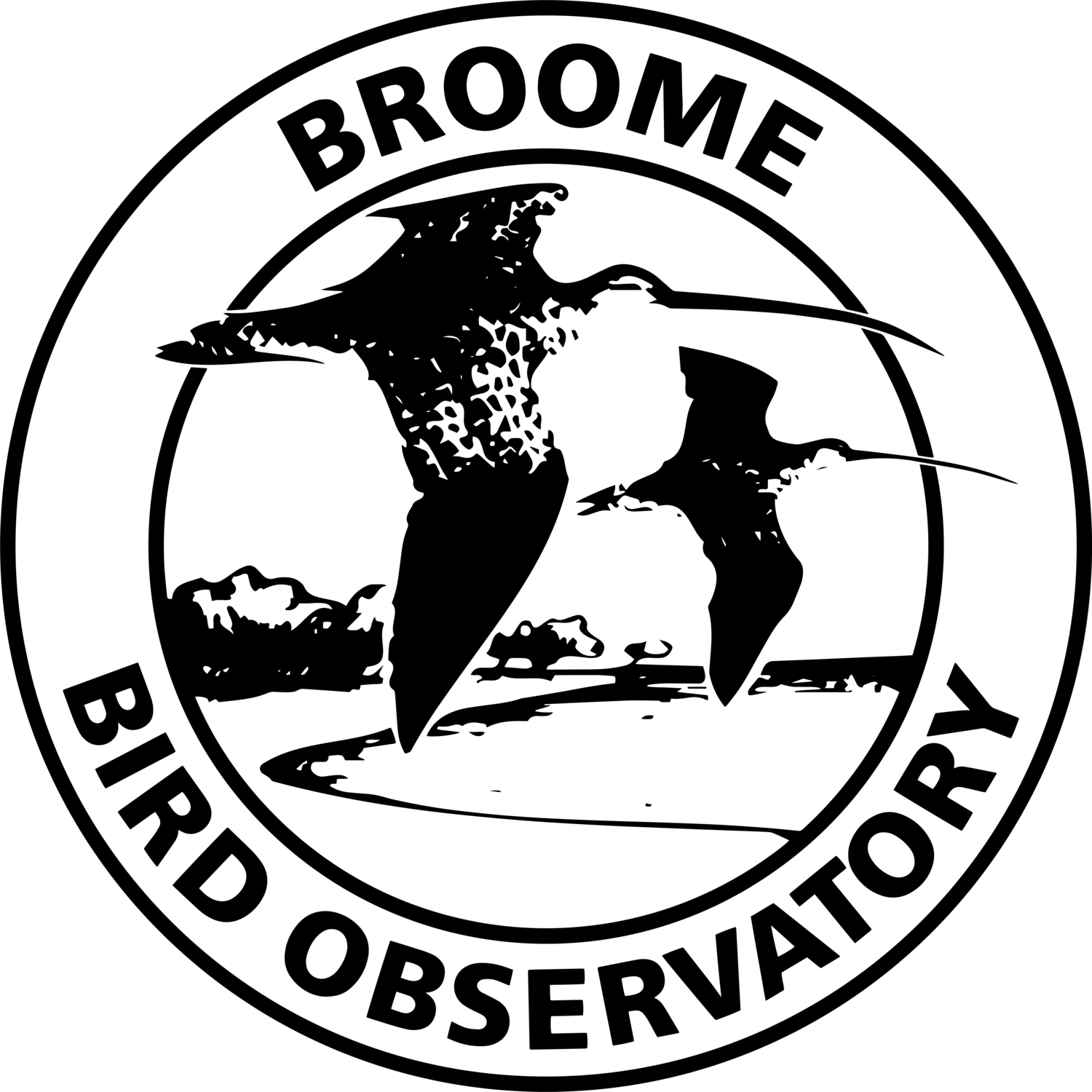Sightings Roundup: January-June 2020
An immature female Great Frigatebird seen from Gantheaume Point in May. Photo: Nigel Jackett.
After an extremely dry 2019, we were thrilled to return to Broome in January after some good rains, which brought widespread flooding across Roebuck Plains and plenty of waterbirds into the region. Many of these, including Magpie Goose, Green Pygmy-goose, Glossy Ibis, Plumed Egret and Comb-crested Jacana were scarce in the dry conditions last year. Highlights of the early wet season included national rarities brought by tropical storms: House Swift, Red-rumped Swallow and our now-regular dark swiftlets. The difference this year were some excellent photographs of birds showing key characters, which may clinch the identification of both Himalayan Swiftlet and Edible-nest Swiftlet in a mixed-species group. From a local perspective, records of Eastern Koel, Shining Bronze-Cuckoo, Oriental Cuckoo and Common Noddy in February were also noteworthy.
Despite the early promise there was little rain later in the wet. By the time weather turned dry, rainfall totals were still well below Broome’s long-term average (albeit already higher than for 2019). The benefit of this was being able to access both Kidneybean Claypan and Lake Eda before northward shorebird migration. The flooded saltmarsh around Kidneybean was teeming with life, with hundreds of Little Curlew, Oriental Pratincole, Oriental Plover and White-winged Black Tern joining the local Yellow Chats. The year’s only Flock Bronzewings were seen in the area in March. Lake Eda was just as rewarding, with fantastic conditions yielding a Ruff and locally-rare Great Crested Grebe in April. Oriental Pratincole, Little Curlew and Marsh Sandpiper continued to be seen around Eda until May.
This albicauda Grey Fantail showed off its white tail feathers around the BBO campground in May and June. Photo: Mattea Taylor.
In Roebuck Bay, Asian Dowitchers became more conspicuous on the northern shores as migration time approached, with up to 14 being seen at one time in March. Migration watches were extremely productive, with over 20,000 shorebirds counted heading north and large numbers of Broad-billed Sandpipers often foraging on the tideline right in front of observers. A count of 558 on 7th April was a record for this species in the bay. Although a few are likely to be overwintering here these have proved hard to find, with no records since late April. On the other hand, up to 4 overwintering Common Redshanks have been seen together through June – unusual for this nationally rare shorebird – and there seem generally to be excellent numbers of migratory shorebirds present this winter. As most of these are in their first year of life, waiting another year before migrating to breed, this is an encouraging sign that 2019 was a good breeding season. Another surprise in Roebuck Bay, though less welcome from the shorebirds’ perspective, was a brief visit from a Black Falcon in March.
Square-tailed Kites are uncommon in Broome, but were seen occasionally hunting over coastal vine thickets in May and June. Photo: Adrian Boyle.
Although we thought the wet season was over in April, late May brought a bonus overnight deluge which flooded Crab Creek Rd, delighted the local mosquito population, and transformed assessments of the year’s rainfall from ‘disappointing’ to ‘decent’. The weather system also sent a Great Frigatebird and another House Swift our way. The waterholes have been beautifully topped up, with Green Pygmy-geese returning to Lake Campion and Glossy Ibis to Lake Eda, which is also now welcoming the hundreds of Brolga that help make it such a special place through the dry.
The changing seasons bring other birds into the region too. Highlights of the dry season so far include 13 Major Mitchell’s Cockatoos found on the eastern part of Roebuck Plains. This species only added to the Broome list a couple of years ago, but is now being found repeatedly at some of the furthest reaches of our 70 km recording radius. White-browed Crake, Leaden Flycatcher and the occasional Square-tailed Kite have been seen in recent weeks. Other species very familiar to birders elsewhere are something of a winter novelty in Broome, including Welcome Swallow (unusually there have been up to 3 at the town sewage works) and Grey Fantail (we had the rare treat of a white-tailed inland albicauda bird around the campground in May and June). It’s only a few weeks until the first post-breeding migratory shorebirds start returning, and we can’t wait to see what the next six months brings.



